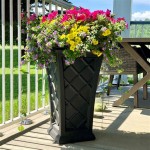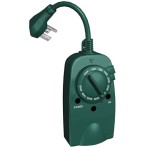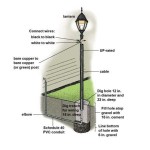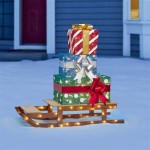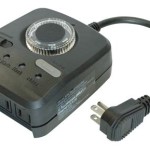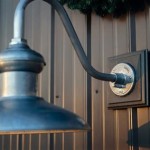Antique Outdoor Wall Sconces: Illuminating History and Enhancing Ambiance
Antique outdoor wall sconces serve as more than just sources of light; they are artifacts that connect us to the past, adding character and historical significance to contemporary outdoor spaces. Their appeal lies in their unique designs, craftsmanship, and the stories they whisper of bygone eras. These fixtures, originally designed for practical illumination, have evolved into coveted decorative elements, sought after by homeowners, designers, and collectors alike.
The definition of "antique" generally refers to items that are at least 100 years old. This age requirement ensures that the sconce possesses a certain historical value and represents a specific period in design and manufacturing. However, the term is sometimes loosely applied to vintage pieces, which are typically older than 20 years but not yet reaching the 100-year antique mark. Understanding this distinction is key when sourcing and evaluating antique outdoor wall sconces.
The value and desirability of antique outdoor wall sconces are influenced by several factors. These include the sconce's age, rarity, condition, original design, maker, and provenance (documented history of ownership). Sconces from well-known manufacturers or those with a documented historical connection command higher prices than those of unknown origin. The material used in construction – whether it be wrought iron, bronze, copper, or a combination of materials – also plays a significant role in determining its value and aesthetic appeal.
Identifying Authentic Antique Outdoor Wall Sconces
Distinguishing genuine antique sconces from reproductions or merely old fixtures requires a keen eye and careful examination. Several telltale signs can help in the identification process. Firstly, examine the material. Antique sconces often display a patina consistent with age, such as oxidation or discoloration that cannot be easily replicated. Wrought iron sconces, for example, might exhibit a subtle layer of rust, while bronze sconces may have a green or brown patina.
Next, scrutinize the construction and detailing. Antique sconces were often handcrafted, and imperfections, such as minor irregularities in the metalwork or slight unevenness in the casting, are common and can even add to their charm. Look for signs of hand-tooling and craftsmanship, which are often absent in mass-produced modern replicas. Consider the type of fasteners used. Antique sconces typically employ screws and bolts that are different from those used today, often featuring slotted or square heads.
Check for any maker's marks or stamps. Manufacturers of antique lighting fixtures often included their logo or name on the sconce, usually stamped onto the backplate or another inconspicuous area. Researching these marks can help to identify the sconce's origin and age. However, it's crucial to be aware that these marks can sometimes be faked, so cross-referencing the mark with known information about the manufacturer is essential.
Finally, consider the wiring. Original wiring in antique sconces is unlikely to meet modern safety standards and should be replaced by a qualified electrician. However, examining the original wiring can offer clues about the sconce's age. Early electrical wiring was often cloth-covered, while later iterations used rubber or plastic insulation. Be cautious when handling old wiring, as the insulation can become brittle and pose a safety hazard. Any restoration work should always be carried out by a professional electrician who is familiar with antique lighting.
Styles and Materials of Antique Outdoor Wall Sconces
Antique outdoor wall sconces come in a wide array of styles, reflecting the diverse architectural and decorative trends of different eras. From the ornate and elaborate designs of the Victorian era to the streamlined and geometric forms of the Art Deco period, each style offers its own unique aesthetic. Familiarizing oneself with these styles is essential for identifying and appreciating the historical significance of these fixtures.
Victorian sconces, popular from the mid-19th century to the early 20th century, often feature intricate details, such as floral motifs, scrollwork, and elaborate castings. They are typically made of cast iron, bronze, or brass and often incorporate elements like stained glass or etched glass shades. These sconces were designed to be both functional and decorative, serving as a symbol of status and refinement.
Art Nouveau sconces, which emerged in the late 19th century and early 20th century, are characterized by their flowing lines, organic forms, and nature-inspired motifs. They often feature stylized representations of flowers, leaves, and insects and are frequently crafted from bronze or copper. Art Nouveau sconces are highly prized for their artistic merit and their ability to add a touch of elegance and sophistication to any outdoor space.
Art Deco sconces, popular in the 1920s and 1930s, are known for their geometric shapes, symmetrical designs, and use of modern materials, such as chrome, aluminum, and Bakelite. They often feature stepped patterns, angular forms, and stylized depictions of industrial motifs. Art Deco sconces reflect the optimism and technological advancements of the era and are often used to create a sense of glamour and sophistication.
The materials used in antique outdoor wall sconces vary depending on the period and style. Wrought iron was a common material in earlier periods, prized for its durability and ability to be shaped into intricate designs. Bronze and copper were also frequently used, offering a more refined and elegant look. In the early 20th century, materials like aluminum and Bakelite became popular, reflecting the influence of industrial design.
Restoration and Maintenance of Antique Outdoor Wall Sconces
Restoring antique outdoor wall sconces requires a delicate balance between preserving their historical integrity and ensuring their functionality and safety. Before undertaking any restoration work, it's crucial to carefully assess the condition of the sconce and determine the extent of the repairs needed. The goal should be to stabilize the fixture and restore it to its original appearance as much as possible, while also making it suitable for modern use.
Cleaning is often the first step in the restoration process. Use gentle cleaning solutions and soft cloths to remove dirt, dust, and grime. Avoid using abrasive cleaners or scouring pads, as these can damage the finish. For stubborn dirt or corrosion, consider using specialized cleaning products designed for antique metals. Always test any cleaning solution on an inconspicuous area of the sconce before applying it to the entire surface.
Repairing damaged or missing parts is often necessary. Small cracks or chips in the metal can sometimes be repaired with epoxy or metal filler. Larger repairs may require welding or soldering. When replacing missing parts, try to source replacements that are as close to the original as possible in terms of material, style, and finish. If original replacements are unavailable, consider having custom parts fabricated by a skilled metalworker.
Rewiring is almost always necessary to ensure the safety of antique outdoor wall sconces. Old wiring can become brittle and cracked over time, posing a fire hazard. Hire a qualified electrician to replace the old wiring with new, modern wiring that meets current safety standards. The electrician should also inspect the socket and replace it if necessary. LED bulbs are often recommended for antique sconces, as they produce less heat than incandescent bulbs and are more energy-efficient.
Maintaining antique outdoor wall sconces is essential for preserving their beauty and extending their lifespan. Regularly cleaning the sconces to remove dirt and debris is important. Periodically inspect the sconces for signs of damage, such as rust, corrosion, or loose connections. Touch up any minor imperfections with appropriate paint or sealant. By taking these preventative measures, you can ensure that your antique outdoor wall sconces will continue to illuminate your outdoor spaces for many years to come.
The integration of antique outdoor wall sconces into modern landscapes presents a unique opportunity to blend the charm of the past with contemporary design. These fixtures can add a touch of elegance and character to a variety of outdoor settings, from patios and gardens to entryways and porches. Careful planning and consideration of the sconce's style, scale, and placement are essential for creating a cohesive and visually appealing design.

Garden Wall Lighting Outdoor Light Vintage Sconces Kitchen Lamps

Outdoor Wall Sconce Rustic Black Broe Gold Metal Glass Unique

Pair Of American Victorian Patinated Iron Outdoor Lantern Sconces At 1stdibs Wall Lights Antique

Rustic Wall Sconce Glass Wrought Iron Outdoor Antique Decorative

Antique Pair Of Large French 1940 Wrought Iron Outdoor Sconces Modern Wall Lights

Antique Style White Glass Metal Lantern Waterproof Outdoor Wall Lights Sconces

Aiqidi Retro Wall Light Vintage Rustic Outdoor Lantern Lamp Antique Brass Sconces Waterproof E27 Exterior For Balcony Garden Porch Com

Antique Lighting Large Outdoor Cast Iron Porch Wall Sconce

Single Wall Mount Lighting Antique Outdoor Sconce Light With Lantern Rippled Glass Shade Clearhalo

Westinghouse Kellen 1 Light Antique Brass Outdoor Wall Lantern Sconce 6335200 The Home Depot
Related Posts
